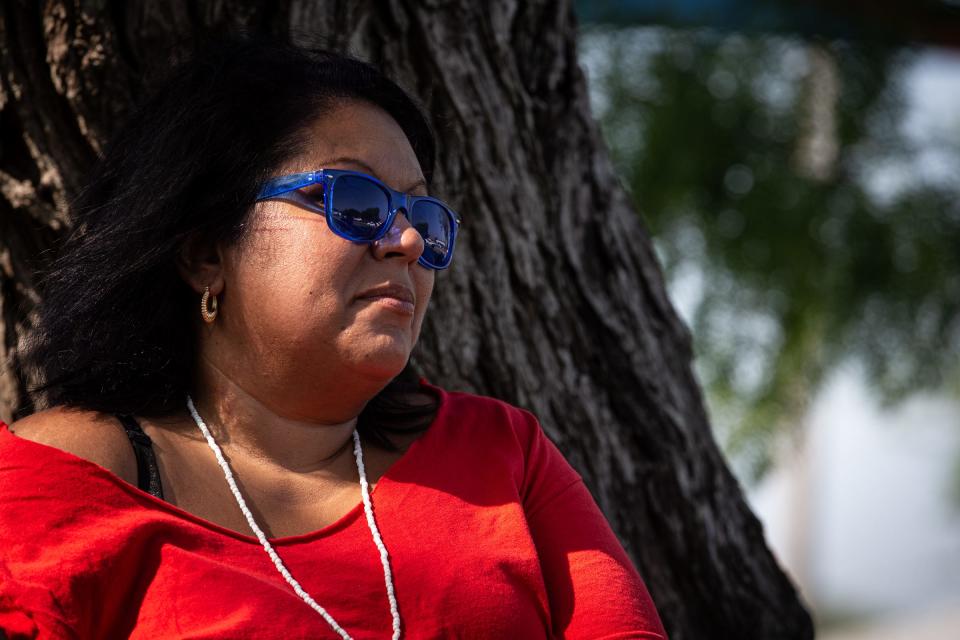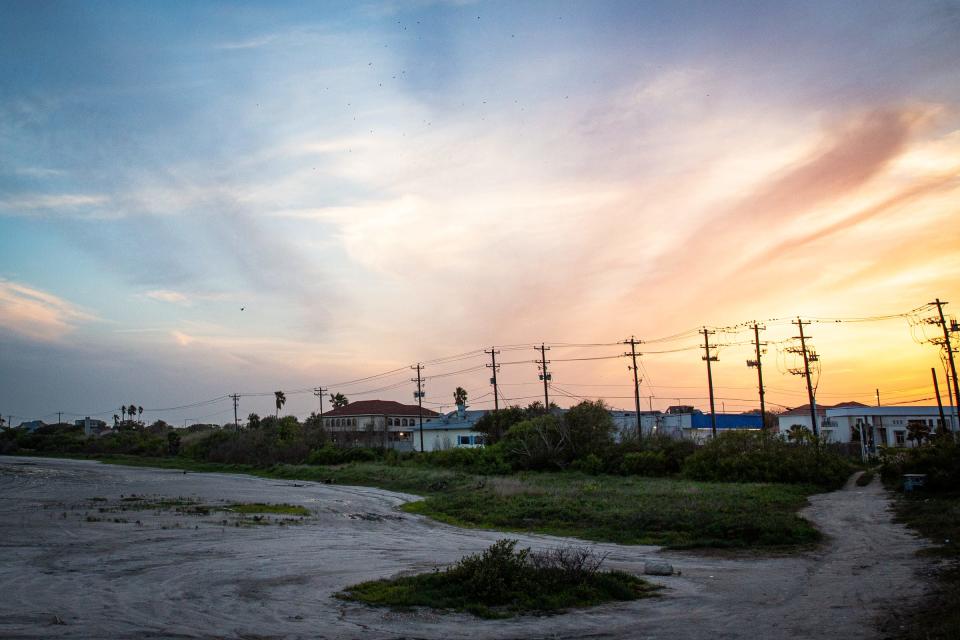A&M-Corpus Christi event focuses on Karankawas past and present
Kicking off a month of Indigenous heritage events, several historians and a local Indigenous activist participated in a panel discussion Tuesday at Texas A&M University-Corpus Christi focused on Karankawa history and sites near the campus.
Throughout November and early December, there are several cultural events planned to celebrate National Native American Heritage Month, including the planned screening of a film focused on efforts to honor those who were interred in a local burial ground on Monday and a Dec. 3 powwow.
For hundreds of years, from the early days of European exploration of Texas until the early 1800s, Karankawa tribes dominated the Texas coast. But by the mid-1800s, Texas academics declared them extinct.
In recent years, Karankawa descendants whose ancestors assimilated in order to survive have begun reconnecting with their roots and speaking publicly about their heritage. Love Sanchez is a member of intertribal group Indigenous Peoples of the Coastal Bend and Karankawa Kadla, a group that connects individuals of partial Karankawa descent.

On Tuesday, Sanchez shared her story and the story of Karankawa Kadla. Southern Methodist University doctoral student Tim Seiter shared historical context about Karankawa history and Texas A&M University-Corpus Christi professor Peter Moore spoke about the university's connection to a nearby Indigenous burial ground.
"Texas A&M University-Corpus Christi is located on the unceded ancestral lands and waters of the Karankawa people of the Texas Gulf Coast," A&M-Corpus Christi English professor Dale Pattison said, opening the panel discussion. "Local collectives also include the Lipan Apache, Tonkawa, Comanche and Coahuiltecan."
A&M-Corpus Christi is located between Oso Bay and Corpus Christi on Ward Island, which is connected to the mainland by a mudflat called Cayo del Oso.
Indigenous inhabitants of the area used a dune along Cayo del Oso as a burial ground for centuries prior to Europeans arriving in the area. The cemetery was not in use when European and American settlers colonized the area, but archeological evidence indicates the hundreds of individuals buried in the cemetery are potentially Karankawa ancestors.

In the 20th century, archeologists and looters removed the human remains of hundreds of individuals and associated grave goods from the site. Today, those human remains are kept by universities and museums across the state and nation.
As Texas A&M University-Corpus Christi has grown, Ennis Joslin Road, which hugs Oso Bay, has been widened. These road improvement projects uncovered more burials in the 1990s and early 2000s.
Moore said that when you think of A&M-Corpus Christi as an island, instead of as a peninsula connected to the burial site by a mud flat, it's easier to ignore the connection between campus today and the area's Indigenous history.
"Viewing us as an island can somewhat deny this connection and the significance of this mudflat and this burial ground that's such a part of our history," Moore said. "It also cuts us off as an island separate from our community, from the ongoing struggles of Indigenous people and of all of us in dealing with the consequences of settler-colonialism in the Coastal Bend area."
Karankawa tribes inhabited the area between Galveston Bay and Corpus Christi Bay. On McGloin Bluff north of Corpus Christi Bay, researchers have found 40,000 artifacts.
"The Karankawas should be known as the jewelers of Texas," Seiter said, explaining that Karankawas created pendants from sea shells to trade with inland groups. "We see these pendants making their way from the Texas Gulf Coast all the way up to the Great Lakes, which shows how extensive these Native American trade networks are."
Karankawas controlled their territory for over twice as long of a period of time as the U.S. has been a country, Seiter said, from the 1200s until the 1820s, withstanding the Spanish.
But that changed when Anglo-Americans began settling the Texas coast. The Karankawas were already facing waves of disease, interruptions to traditional lifestyles and encroachments on their territory from other Indigenous groups who were being forced from their own ancestral lands by American colonization.
When Stephen F. Austin first visited Texas, he wrote a grim message in his journal, repeating Spanish myths of Karankawa savagery and cannibalism, Seiter said.
"The Karankawas may be called universal enemies to man," Austin, who is known as the "Father of Texas," wrote. "They kill all nations that come in their power... There will be no way of subduing them but extermination."
The Texas Rangers attacked and killed many Karankawas and the settler population soon vastly outnumbered the Karankawas, whose population had dwindled to the hundreds in the face of 100,000 Anglo-American settlers.
Karankawas survived genocide through assimilation with Mexicans, Americans and other Indigenous groups, Seiter said. Members of Karankawa Kadla and others who claimed Karankawa descent throughout the 1900s point to oral history.
Sanchez, who was born in the Coastal Bend and attended the university, said her family has Lipan Apache and Karankawa ancestry. She knows this through oral history and mission records, but she was not connected with her Indigenous heritage growing up.
"I was not brought up with my culture," Sanchez said. "A lot of people that are native in Texas have the same story. They weren't brought up with it because it was stripped from them."
But she's been able to reconnect with that heritage through Karankawa Kadla as Karankawa descendants have come together on social media.
"I am very happy that we're connected now," Sanchez said.
Reclaiming heritage, some in the Coastal Bend fight to preserve Karankawa land, history
Caller-Times explores removal of Native American remains from Nueces County graves
Native American graves were dug up in Nueces County. Many human remains still await return.
This article originally appeared on Corpus Christi Caller Times: A&M-Corpus Christi students hear about Karankawa revival

